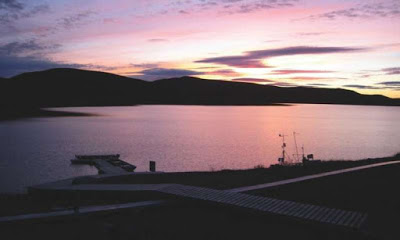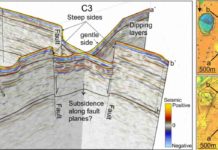
Not all sources of methane emissions are man-made. A new study shows that northern freshwaters are critical emitters of this greenhouse gas.
The findings from the Permafrost Carbon Network, an international organization that includes UC Santa Barbara’s Sally MacIntyre, also underscore the urgency of combatting human-induced global warming. The results appear in the journal Nature Geoscience.
“Climate-sensitive regions in the north are home to most of the world’s lakes,” said co-author MacIntyre, a professor in UCSB’s Department of Ecology, Evolution, and Marine Biology. “Lakes at high northern latitudes are an important—and often overlooked—source of methane, a potent greenhouse gas.”
According to the scientists, climate warming, particularly at high northern latitudes, and longer ice-free seasons in combination with permafrost thaw, are likely to fuel methane release from lakes, potentially causing methane emissions to increase 20 to 50 percent before the end of this century. Such a change, MacIntyre noted, would likely generate a positive feedback on future warming, causing emissions to increase even further.
“This means that efforts to reduce human-induced warming are even more urgent to minimize this type of feedback of natural greenhouse gas emissions,” said co-author David Bastviken, a professor at Linköping University in Sweden, who is currently visiting UCSB. “In a sense, every reduction in emissions from fossil fuels is a double victory.”
By compiling previously reported measurements made at a total of 700 northern water bodies the researchers have been able to more accurately estimate emissions over large scales. They found that methane emissions from lakes and ponds alone are equivalent to roughly two-thirds of all natural methane sources in the northern region.
“The release of methane from northern lakes and ponds needs to be taken seriously,” said lead author Martin Wik, a graduate student at Stockholm University. “These waters are significant, contemporary sources because they cover large parts of the landscape. They are also likely to emit even more methane in the future.”
Reference:
Martin Wik et al. Climate-sensitive northern lakes and ponds are critical components of methane release, Nature Geoscience (2016). DOI: 10.1038/ngeo2578
Note: The above post is reprinted from materials provided by University of California – Santa Barbara.










